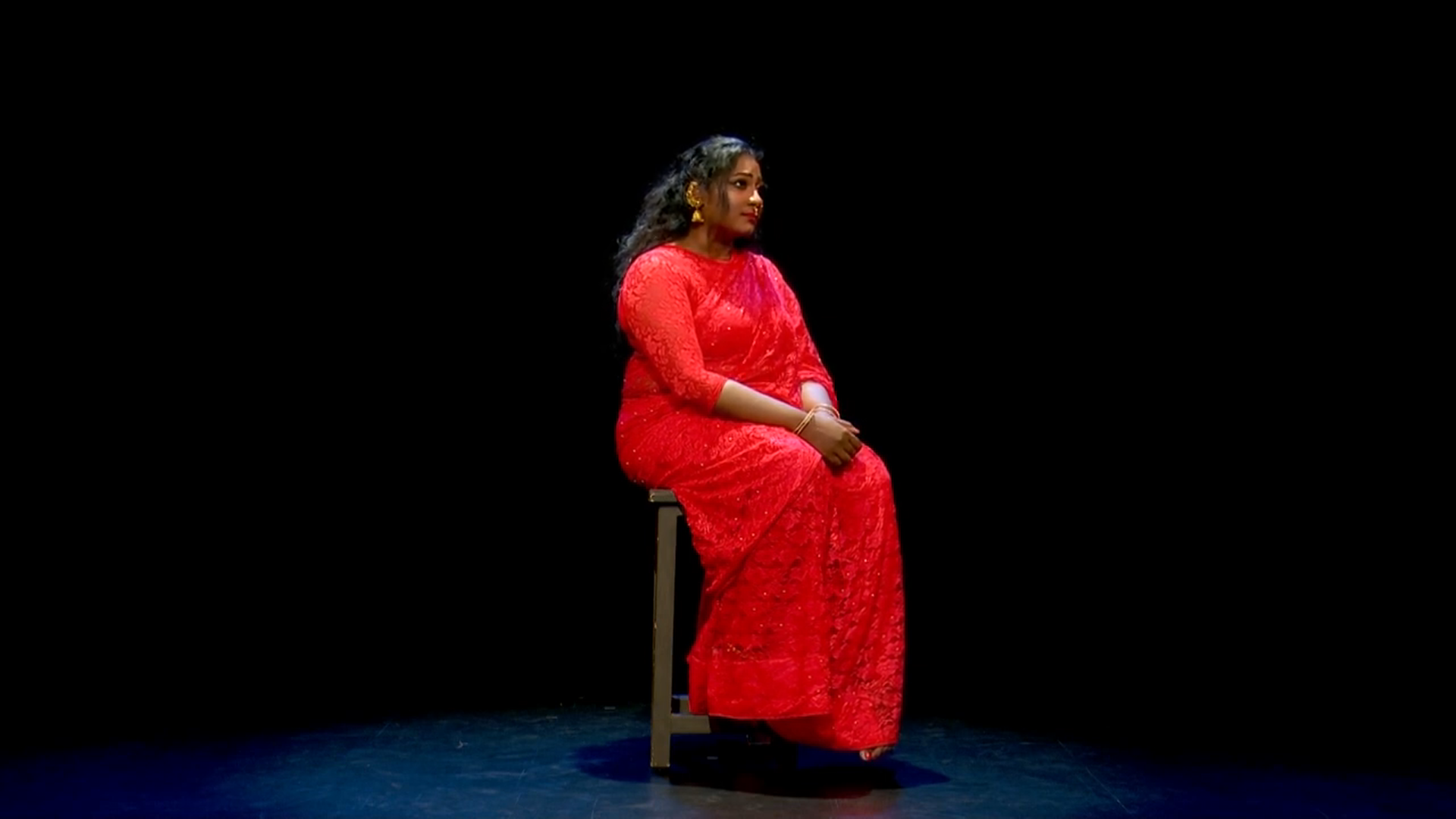Fighting to be heard: Resurrecting the Aesthetics of an Appropriated Art
Essay by Nrithya Pillai
I am a woman from a community rich in
performing arts traditions in South India - the hereditary performing arts castes,
from whose families the reinvented form of Bharathanatyam was, and continues to
be appropriated. While I am fighting patriarchy like every other woman, it
affects women from castes like mine differently as compared to women from
privileged and upper castes, especially brahmin castes.
My response to the project "Dance Affectionate" is an attempt to give form to historically silenced voices and to offer resistance by marginalized women. I perform here a song - a tamil padham- romantic lyrics on love performed historically by women from courtesan castes like mine. While Nirmala in her work titled The Problematic Danceuse acknowledges the troubled history of Bharathanatyam and the exclusion of its hereditary practitioners in the name of reinvention, I believe it is important to re-animate the aesthetics and art from the hereditary families, especially on bodies that are from these communities- bodies like mine that do not fit into the norms of Brahminic beauty – bodies that have been deliberately excluded. This is how I wish to respond to the box that contained everything that was representative of the feminist work that had been put in there by Nirmala.
I wanted to perform this musical piece that was once sung by a hereditary artiste called Tiruvidaimarudur S Bhavani in an old gramophone record. This piece and numerous pieces like these that were part of oral histories in families like mine were lost during the “reinvention” of Bharathanatyam by Brahmin elites like Rukmini Devi. It was done by branding these pieces as "vulgar" and "dirty". And the women who performed them, were also called the same. I come from those families that were stamped as vulgar and lewd, particularly the women. And as you could imagine, such labels do not recede for generations to come. These notions of our past make our present very problematic. We suffer from intergenerational trauma that comes from belonging to castes, which are never publicly acknowledged. This is not even persecution, it is a kind of systematic erasure, all in the name of women’s emancipation. In all these notions of purity and morality comes the question - who decides whether a woman can have sexual agency?-Does caste and class play a role in this? I completely believe so.
I wanted to perform this musical piece that was once sung by a hereditary artiste called Tiruvidaimarudur S Bhavani in an old gramophone record. This piece and numerous pieces like these that were part of oral histories in families like mine were lost during the “reinvention” of Bharathanatyam by Brahmin elites like Rukmini Devi. It was done by branding these pieces as "vulgar" and "dirty". And the women who performed them, were also called the same. I come from those families that were stamped as vulgar and lewd, particularly the women. And as you could imagine, such labels do not recede for generations to come. These notions of our past make our present very problematic. We suffer from intergenerational trauma that comes from belonging to castes, which are never publicly acknowledged. This is not even persecution, it is a kind of systematic erasure, all in the name of women’s emancipation. In all these notions of purity and morality comes the question - who decides whether a woman can have sexual agency?-Does caste and class play a role in this? I completely believe so.
While
I perform this piece from the erased pasts of Bharathanatyam, I also present a
modern aesthetic much inspired by Nirmala's feminist assertions. I perform
sitting on a stool in a modern red lace saree without the traditional bindi,
almost in a jazz inspired bar set up- yet again bringing the question about who
gets to be in control of their sexuality. Bar dancing continues to be a
controversial issue in India and not so surprisingly many women who are bar
dancers also come from hereditary courtesan castes (although different from the
ones in South India, like the one I belong to). The government banned these
women from dancing and therefore denied them their right to work - a
fundamental right provided by the Indian Constitution for every citizen of the
country. This is done on the grounds that it is immoral to practice such a
profession. They are called prostitutes without much thought.
This is very similar to the way patriarchy drove the narrative of reform within castes like mine that had professional women performers. They were denied the right to work based on notions of morality and sexuality. My performance is therefore also about bringing that lived reality of belonging to a caste with a problematic history and to bring to light the important point that sexual agency and its articulation is still a privilege that cannot be afforded by many women, especially women from marginalized courtesan caste locations.
This is very similar to the way patriarchy drove the narrative of reform within castes like mine that had professional women performers. They were denied the right to work based on notions of morality and sexuality. My performance is therefore also about bringing that lived reality of belonging to a caste with a problematic history and to bring to light the important point that sexual agency and its articulation is still a privilege that cannot be afforded by many women, especially women from marginalized courtesan caste locations.
© 2021 Nrithya Pillai
All Rights Reserved